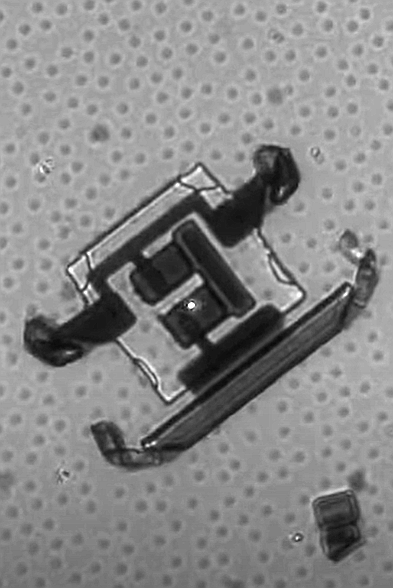Million robots fit in syringe
 Researchers in the US have produced a million tiny robots, each smaller than the human eye can see.
Researchers in the US have produced a million tiny robots, each smaller than the human eye can see.
Cornell University scientists say they have created the first robots smaller than the width of a human hair and invisible to the naked eye, that use on-board electronics to ‘walk’.
The achievement is the result of the development of a new class of actuator (a component that makes the robots move) that is compatible with existing silicon electronics.
Miniaturisation of electronics to produce cell-sized robots has been a sought-after goal, but the technology has been limited by the lack of suitable micrometre-scale actuator systems.
Dr Marc Miskin and colleagues have now demonstrated a new class of electrochemical actuators that overcome this issue.
These actuators form the legs of robots that are less than 0.1 mm in size (around the width of a human hair) and bend when stimulated by laser light, causing a walking motion.
His team has been able to produce over one million walking robots on a 10-centimetre wafer of silicon. The robots are powered by on-board silicon photovoltaics.
The authors suggest that these are the first known robots smaller than 0.1 mm in size in which on-board electronics are used to control actuation.
They are robust, surviving highly acidic environments and temperature variations of more than 200 degrees Kelvin, and can be injected through hypodermic needles, offering the potential to explore biological environments.
These robots currently have limited function; they are slower than other swimming robots, they do not sense their environments, and they lack integrated control. However, the authors conclude that their compatibility with existing silicon technologies should enable the development of increased capabilities.
They can be seen in action in the videos below, with more details accessible in this scientific report.







 Print
Print